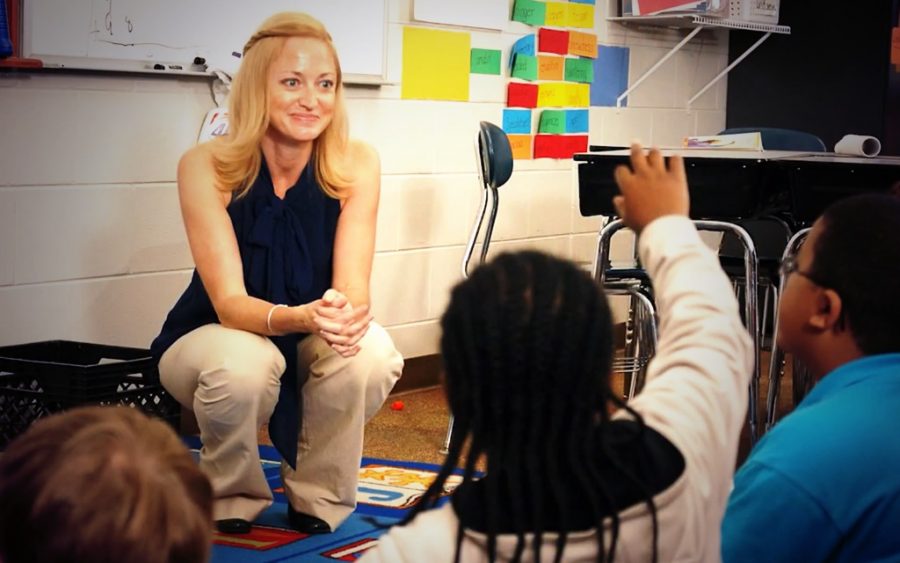Part of the College of Communication and Information Sciences, the institute has multi-functional labs that are being used to expand research in communications-related fields.
“We have several labs with multi-use purposes,” said ICIR Director Kim Bissell. “The labs can be used by any C&IS faculty or graduate student, and we have rented out our space to other researchers who do not have similar facilities.”
These labs include a survey lab, used for online survey data collection or telephone survey work; a content analysis lab, which lets researchers record programming and stimuli, then analyze it at a later date; and a theatre lab, which lets researchers show stimuli to approximately 20 people, then follow up ?with a survey.
Mary Katherine Alsip Shreves, ICIR assistant research scientist, said the facilities are free for C&IS faculty and supervised graduated students and are popular for teaching real-world research tactics.
“Our labs can help with a wide range of research, from giving surveys to collecting psycho-physiological data like heart rate or muscle movement using electrodes,” Shreves said. “They also give faculty the ability to collect data using equipment that can be staggeringly expensive for a researcher ?to purchase alone.”
One of the most technologically advanced ICIR labs in the region is the psycho-physiology lab.
“It allows for the collection of physiological data, like EEG, EKG and skin conductance,” Bissell said. “This means we can measure physiological responses to mediated content. We have used that lab to look at physiological responses to ads, to violent content and to humorous content. This is one of the unique components of our labs in general because very few colleges of Communication & Information Sciences have this equipment.”
The lab was spearheaded in part by Bissell, who also created the Child Media Lab, which houses studies on children’s reactions to different types of stimuli.
“The Child Media Lab was my creation, because I do studies with kids. The lab has two HD/3D televisions. We have several types of gaming equipment, and we have what is called a bioharness, which allows us to measure children’s heart rate, breathing and other vital signs,” Bissell said. “It is basically a child-friendly version of the Psycho-physiology Lab.”
Recently, the Child Media Lab has housed projects including studies focusing on popular Wii games.
“We asked children to play Wii exercise games and then asked them to report how hard they worked, how much they enjoyed the game and if they thought the game could be great exercise for them if done longer,” Bissell said. “We also measured their heart rate to see how hard they were actually working.”
They used the content analysis lab to embed food advertising within an appropriate television show.
“The program, when viewed, was just like they were watching television at home, but we manipulated the ads they saw,” Bissell said. “We then asked them to tell us what kinds of food they wanted to eat right then and were then given the opportunity to select foods [the exact foods they saw advertised a few minutes prior].”
The ICIR labs hosted a child nutrition lab to educate children about the ways they can be more proactive in their own health and well-being.
“The Child Nutrition Camp has been an exciting project for the ICIR to host because it rotates between nearly all of our labs in a single day,” Shreves said. “We love the energy of having a large research initiative like that in our labs.”
Studies at the ICIR Labs are not just restricted to children.
“We have done video gaming studies where we’ve looked at how an individual’s heart rate would go up [or down] depending on the type of game, so we manipulated first-person shooter games with third-person shooter games,” Bissell said. “We have looked at physiological responses to 2D and 3D content.”
The newest addition to the ICIR Labs is the UA Health Communication Lab, which came out of a partnership between Bissell and Scott Parrott, assistant professor in journalism. The goal, Bissell said, is to work together in designing and implementing studies in the area of health communication.
“We had previously worked together on a fairly large project related to media and health literacy, and we have worked on projects related to weight bias and bias against mental illness,” Bissell said. “We will be using many of the ?ICIR Labs for our studies.”
Regina Lewis, visiting professor of advertising and public relations, has conducted projects at the ICIR labs at what she said were much more efficient rates.
“If the ICIR team did not exist, this important collaboration with another college on our campus would not be possible,” she said. “I also have worked with the ICIR team on an industry project for the American Institute for Cancer Research that I believe provided this non-profit organization with terrific strategic direction. So, having the labs on campus is powerful not only for the college and the university as a whole, ?but far beyond.”
Lewis also uses the labs for a consumer insights and understanding course to help students conduct focus groups, observe consumers and report qualitative findings.
“Every semester, students tell me in my evaluations that the lab experience was one of the highlights of their learning,” ?she said.
The projects at the lab she has witnessed and participated in, she said, have been of academic, industry, social and ?personal value.
“The more we can create partnerships that utilize these labs, the more sophisticated they can become,” she said. “And with this, further opportunities for all of our students and faculty across the University are certain to follow.”









